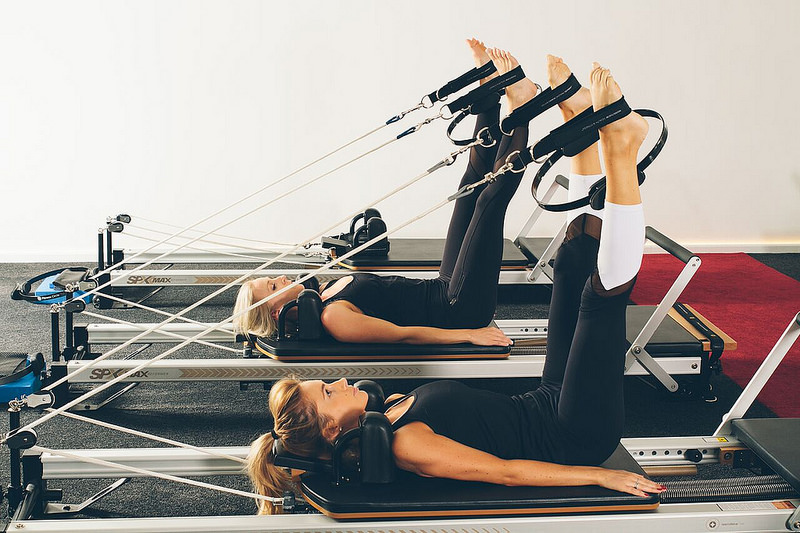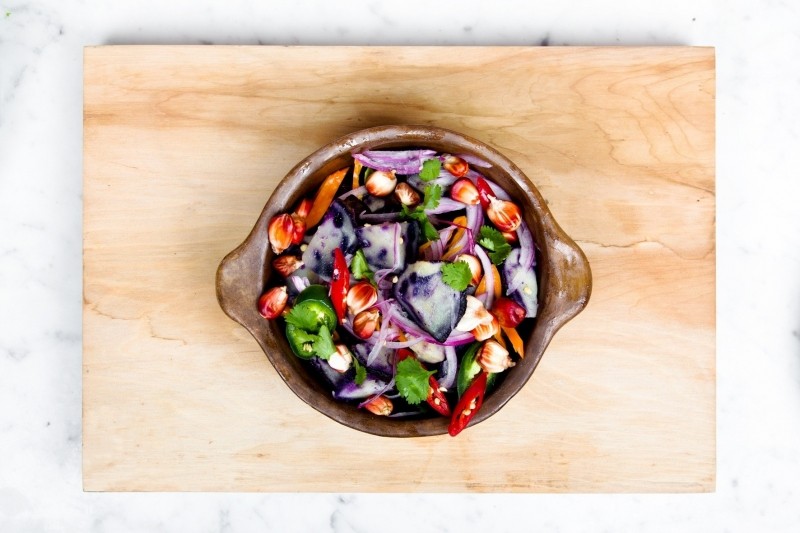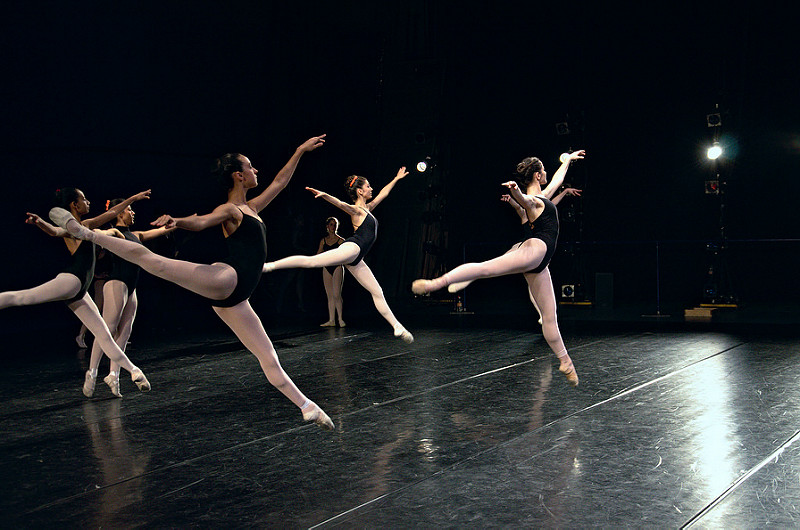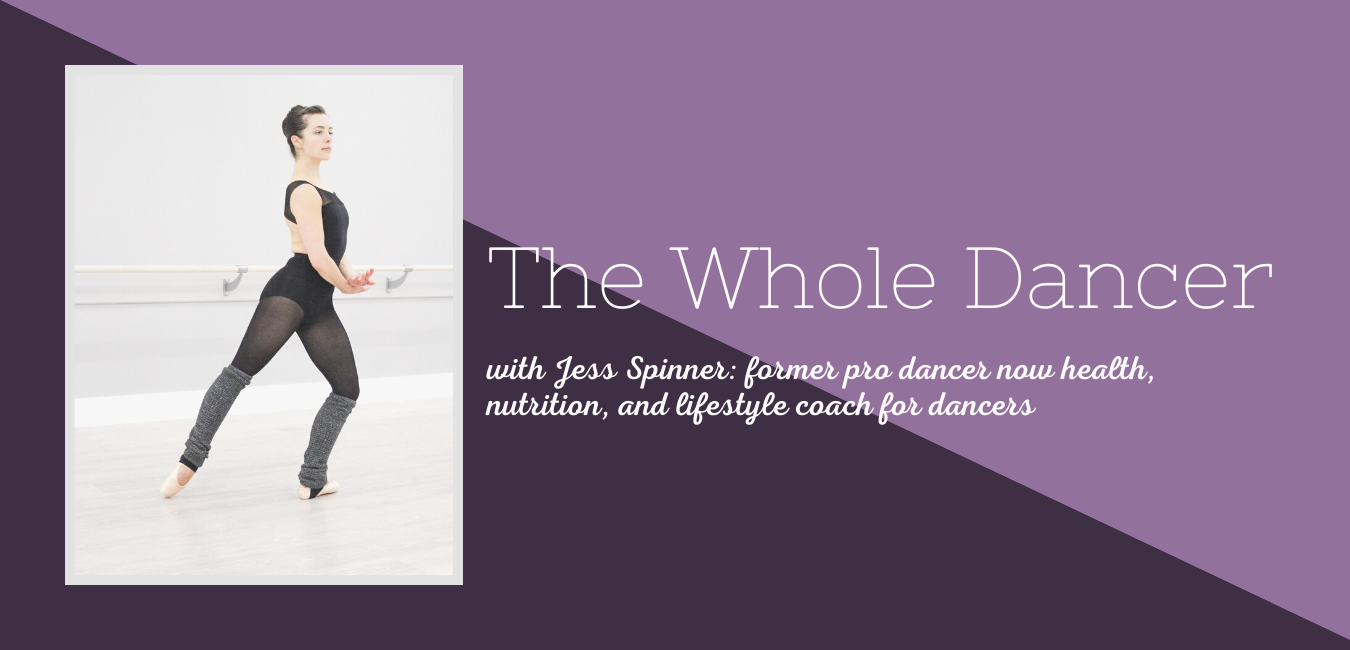Nutrition education: The Missing Gap in a Dancer’s Training
by Leah Brandstetter, The Whole Dancer Intern
Aspiring professional dancers go through a lot of training–technique classes, variations, pointe, pas de deux, conditioning, pilates, contemporary, private lessons/coaching, summer intensives…all to become a better dancer.
The idea is that a young student focuses on technique and will cross train in order to develop more strength, stamina, and flexibility. Basically, a dancer is expected to do anything they can to attain the next level.
This is all well and good. Cross training has been shown to help prevent injury and even help a dancer to reach that next level. But, there is one aspect that is often missed throughout the training and education of a dancer.

There is a lack of nutrition education for dancers–especially those who are students. Unfortunately, a typical P.E. course in school or a nutrition magazine will not provide a dancer with the proper information. Despite being an art form, dance is highly physical and dancers require a good deal of athleticism. Therefore, a typical “diet plan” or basic nutrition course is not enough information for a dancer.
On the other hand, dance is still an art form, and the medium is the body. There is a specific form that dancers are expected to maintain. A typical nutritionist has information for a “normal” person and that won’t work for a dancer. Nor will a sports nutritionist be able to be of much assistance as they do not necessarily deal with the specifics of body form that dancers require.
In other words, dancers require a specialized nutrition education that just does not really exist. That’s part of where Jess is trying to innovate what’s offered with her programs available through The Whole Dancer.

There is yet another problem…
Being a dancer requires a certain amount of perfectionist attitude. I mean, really, how many people would be able to consistently work on the same exercises/steps/choreography over, and over again until they got it right unless they were perfectionists? –Not many.
In my personal experience–and most others personal experience–aspiring dancers and professional dancers tend to have a type A, perfectionist personality. This can be a good thing, but can also get you in a lot of trouble.
Imagine this scenario:
You had a bad day. Nothing in class seemed to go right. You kept falling out of your pirouettes, you couldn’t hold a balance, your jumps were lackadaisical, not to mention your brain just didn’t wrap around the new choreo in rehearsals.
So what do you do? There is too much to focus on, too much to fix all at once, so you start to criticize yourself in the mirror. All of a sudden you wonder why you ever decided to buy this leotard, you slip a skirt on, ugh…that just made it worse.
Another dancer comes along, she is a bit taller than you with willowy proportions, long arms, legs, beautiful arches, and soo thin. All you want to do now is hide in a corner. You feel worthless.

This might be a bit of an extreme–but unfortunately, this is how many dancers begin to feel. Everything becomes out of control so to speak, and yet, many dancers begin to abuse the one thing that they can control-food. And with all the false information and fad diets out there, that isn’t a very hard trap to fall into–instead, it is very, very easy and very, very dangerous.
Without proper nutrition education, dancers are left to fend for themselves. As you can see, dancers already have a lot on their plate (or not enough if you catch my drift) and they shouldn’t be left to seek out everything regarding health on their own.
Yes, your health is your responsibility, but this is another reason you have teachers and mentors–people who went before you and know what you can do to avoid the pitfalls of ill health.
In other words, more teachers and Artistic Directors need to step up to provide dancers with the true information that they need. All dancers have gone to the summer intensive where they get a 30 minute presentation on nutrition–this is not enough. Dancers need more, they deserve it.
How can dancer’s educate themselves and support their dancing with nutrition?
Start now, if you are a student, talk with your teachers about learning more about nutrition specifically for a dancer. See what they think. More and more resources are becoming available for help.
The Whole Dancer or IADMS are wonderful resources. More and more dancers are becoming interested in health as well, it is worth it to see what they have found works for them.
If you are a dancer in a company it might be a bit harder, but don’t give up. Seek out the right information, not quick fixes. If anything promises a speedy weight loss, or encourages a restrictive diet, or maybe a “cleanse” don’t do it. Instead, look for resources that you would be able to keep up for the long term–in other words, lifestyle changes.
Change starts first with you. Don’t encourage ill health by falling into those diet traps. Share good resources with fellow dancers and work so that the next generation of dancers will not have to fend for themselves.
Did you miss part I on how poor diet leads to injury?? Check it out here

Photo credit: runwaypilates on VisualHunt / CC BY
Photo credit: gabrielsaldana on VisualHunt.com / CC BY-SA
